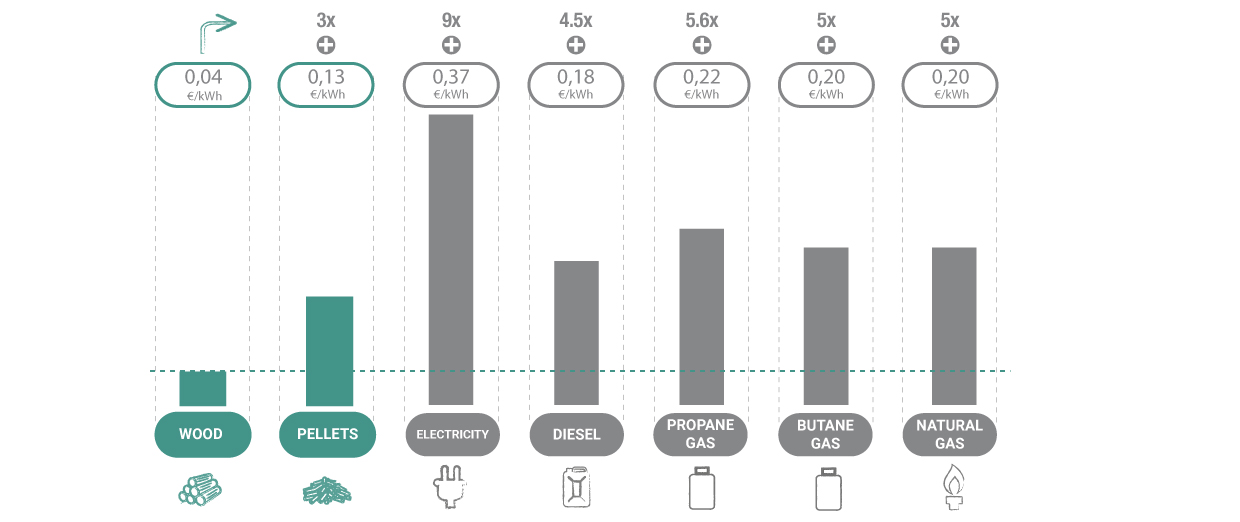NEUTRAL CARBON CYCLE
Wood is considered as stored solar energy and consists of the following components: water, sunlight and carbon dioxide. The amount of carbon dioxide released by wood (when burned) is actually the same it has extracted from the atmosphere as part of its natural cycle and that is then chemically absorbed by trees. Whether the wood decays in the forest or is burned is meaningless. The carbon dioxide output will always be the same – whether as part of its life cycle or when burned for heating purposes.
The carbon dioxide released during the combustion process is subsequently absorbed by the remaining trees, therefore initiating a natural cycle of carbon dioxide absorption, i.e. neutral carbon.
Wood combustion for heating purposes is an ecologically responsible option since in most European countries there has been a considerable increase in the use of firewood material from forest production, in an average estimate of 40% more than firewood consumption.
ECONOMY
Firewood and wood pellets are today the most cost-efficient sources of fuel for household heating, which means that the investment in biomass heating equipment will pay off in very short time.
The following figure illustrates the differences in cost per kW between the various heating fuels available, taking the cost per kW of firewood as the reference point. The savings obtained when using biomass (firewood or pellets), rather than other forms of fuel for heating, are easily verifiable.
 BIOMASS
BIOMASS
 EUROPEAN
EUROPEAN 




